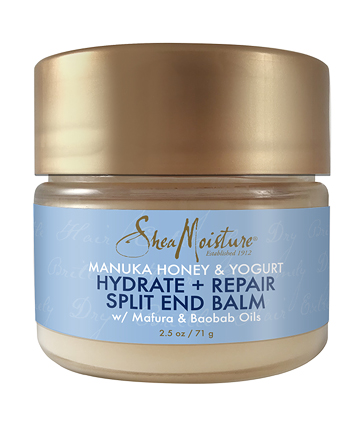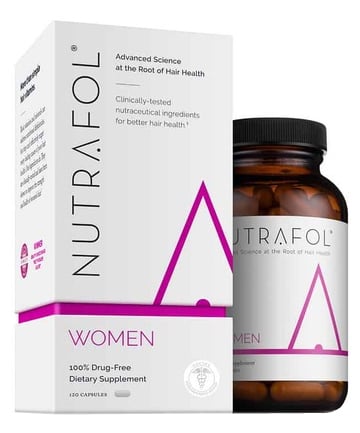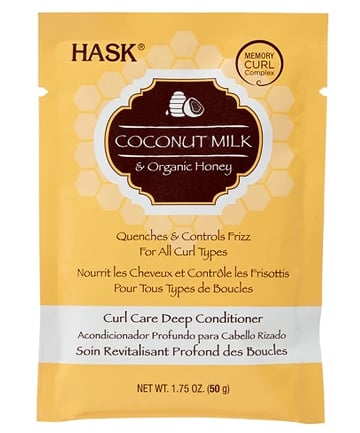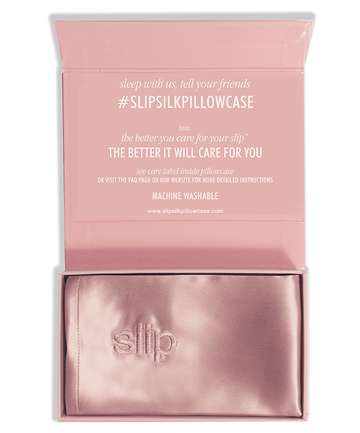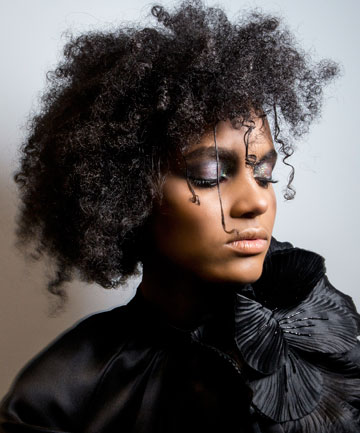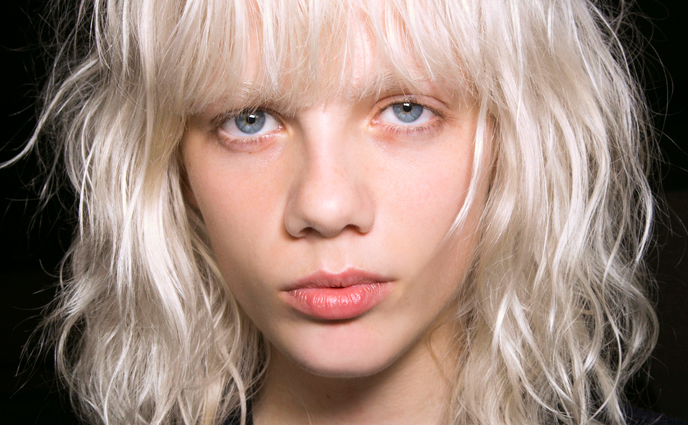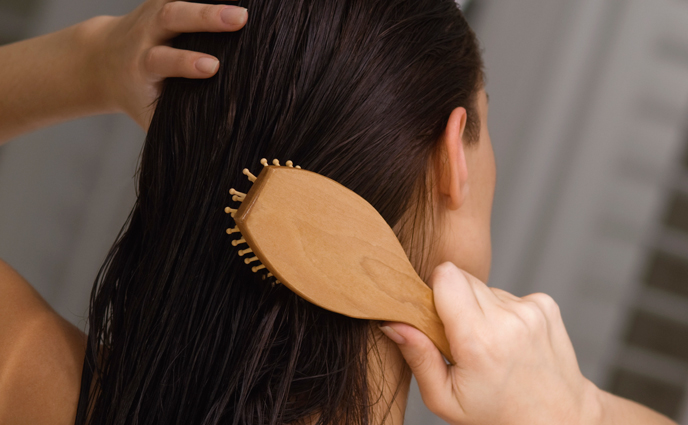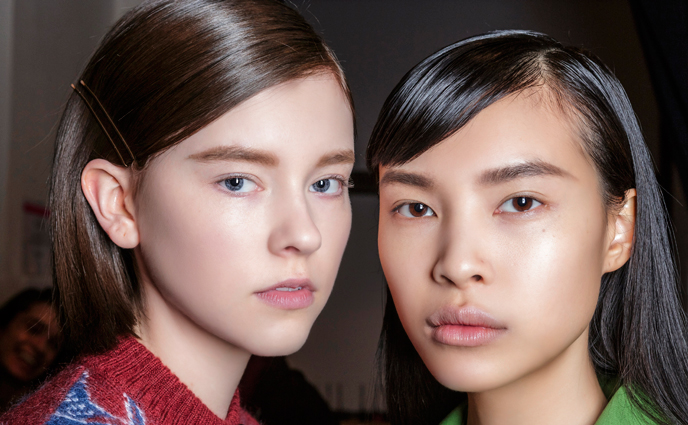One of the things no one struggling to get some kind of length wants to hear is that they have to cut some of it off, but please know that carrying dead ends isn't really "length" and that skipping regular trims works against your goals.
"Unless you get rid of those dead ends, you're not going to grow length; you have to trim it," Sturdivant-Drew says. "Don't skip your trims: you should definitely have someone manage your ends every two to three months." You can also use a product like SheaMoisture Manuka Honey & Yogurt Hydrate + Repair Split End Balm, $9.99, if your ends are starting to look distressed — but know it's just a temporary fix. By the time you see them, it's time for a trim. Even a micro-trim will help, but the dead ends do have to go.
You knew it was coming, but here comes the dietary advice: yes, eating the right foods, drinking plenty of water and maintaining a healthy lifestyle does impact the health of your hair. And if you're eating junk food all the time, your hair growth goals are going to suffer. "You are what you eat, so whatever you put into your body is what you get out of your body," Sturdivant-Drew says. "So, if you're eating stuff that's too salty or fried food all the time, you see it in your body and in your hair."
She's also a big fan of hair vitamins to help with growth and suggests Nutrafol, $88, to a lot of clients. "I always say it's about taking good hair vitamins that actually work. I always start by asking questions about diet when clients complain their hair isn't growing. What are you putting in your body? Why isn't your hair growing? I always refer clients to this vitamin to get their hair to grow."
One of the great temptations, once you stop chemically processing, is the desire to flirt with permanent hair colors you might not have been able to try with a relaxer in your hair. But just know that, well, that's a chemical process as well, so it's going to do some things. "You know, I love hair color on natural hair, but it is 10 times drier," Sturdivant-Drew says. "It's pretty, it's stylish, but it definitely dries the hair out so much more."
Waajid recommends wigs if you want to play around with color but says if the allure of hair color is too strong to resist, do not attempt it at home. "I would say hair color done properly won't hurt (your hair) but that means going to a professional, someone who specializes in that kind of thing. Any time you put chemicals in your hair, you need someone who specializes in that particular chemical process so they can analyze your hair and know exactly how long to process your hair. They can also really give you some great advice on how to keep your hair healthy." One of the most important products for natural hair — color-treated or not — is a good hair mask to replace lost moisture, like Hask Coconut Milk & Organic Honey Curl Care Deep Conditioner, $1.99.
Protecting your hair when you sleep is one of the best practices you can have, which means if you're not going to wrap your hair with a silk scarf or bonnet at night, the next best option is one of Sturdivant-Drew's favorites: a silk pillowcase. "Silk pillowcases are amazing! My hair is natural, but I don't sleep with a scarf; I like my hair to be free. But I thought my hair was getting dry, so I tried one of those silk pillowcases, and I really like it! It's an old remedy that I never really believed in until I tried it myself." The Slip Silk Pillowcase, $85, is a beauty lover's favorite.
Finally, it's the thing no one wants to hear, but time takes time. Both experts advise having some patience when it comes to natural hair growth, but they also advise learning to love your hair right now where it is today. "I wish people could get off the internet to learn their own hair texture. Don't look at the girl in the video so much. Just learn to love yourself and what you're working with right now," says Waajid.
Image via Imaxtree


